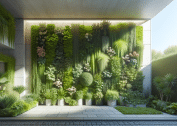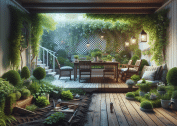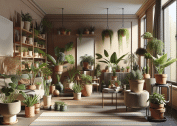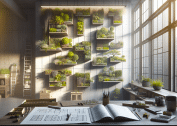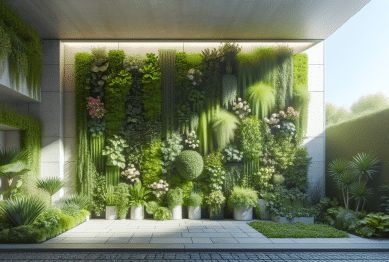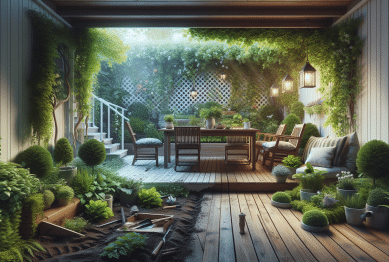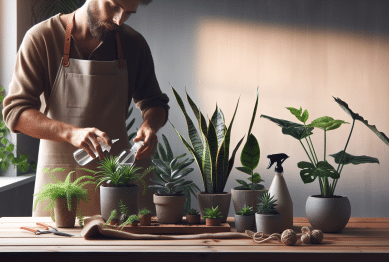Home decor trends are shifting rapidly, shaped by new technologies, sustainability goals, and changing lifestyles. In 2025, homeowners and renters alike are looking for simple ways to upgrade your home decor that feel fresh, functional, and adaptable. Instead of expensive renovations or complete overhauls, the focus has turned to practical updates that make a noticeable difference in daily living.
Whether you’re furnishing your first apartment, refreshing your family home, or just curious about the latest design movements, there are plenty of emerging trends to explore. From smart lighting systems and biophilic design to multifunctional furniture and sustainable materials, these ideas show that style and practicality can go hand in hand.
This guide breaks down the top home decor upgrades in 2025, why they matter, and how you can implement them with minimal hassle.
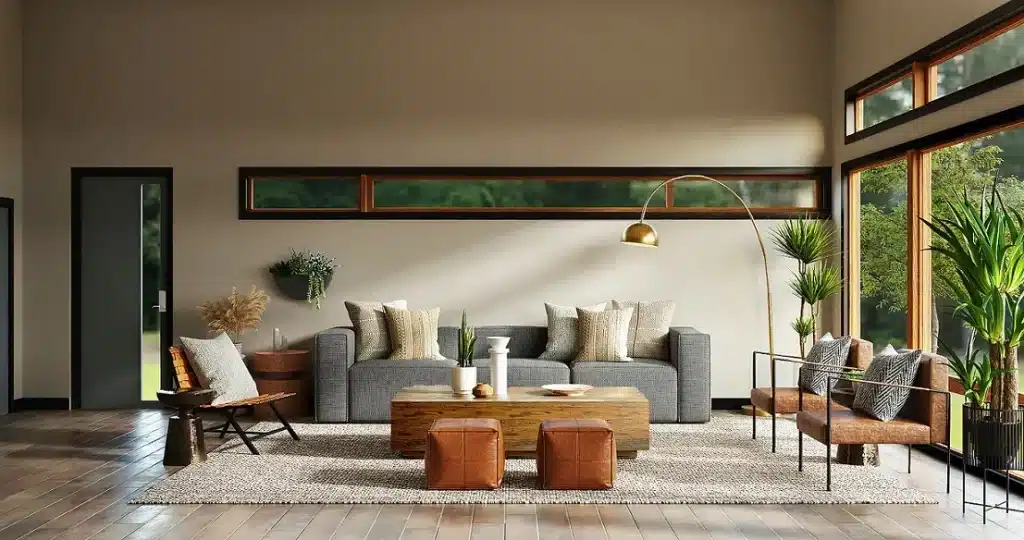
Why Home Decor Matters More Than Ever
Home is no longer just a place to sleep—it’s where people work, recharge, socialize, and express themselves. The pandemic years accelerated this shift, but the momentum has only grown. Remote and hybrid work means more people want multipurpose, comfortable spaces. Rising energy costs are pushing homeowners toward sustainable choices. Meanwhile, younger generations entering the housing market are bringing fresh preferences, often blending minimalism with personalization.
According to Statista (2024), the global home decor market is projected to reach more than $900 billion by 2028. This growth reflects a growing demand for accessible, functional, and aesthetically pleasing updates that keep pace with modern living. In other words, making thoughtful design changes isn’t just about appearances—it’s about improving quality of life.
1. Multifunctional Furniture for Flexible Living
One of the biggest challenges in urban living is limited space. This has made multifunctional furniture a must-have in 2025. Instead of buying single-purpose pieces, homeowners are opting for designs that can adapt to multiple needs.
Examples of multifunctional furniture in practice:
- Sofa beds for overnight guests without the need for a spare bedroom.
- Expandable dining tables that extend for gatherings but stay compact day-to-day.
- Coffee tables with hidden storage to tuck away remotes, magazines, or blankets.
- Wall-mounted foldable desks for creating a home office in small apartments.
IKEA’s Life at Home Report (2025) highlights modular design as a top trend, with customers demanding furniture that can be rearranged or repurposed as lifestyles evolve. For renters, these pieces also provide flexibility to move and reuse items in different layouts.
2. Biophilic Design and Natural Elements
Nature continues to inspire home decor. Biophilic design—a style that integrates natural elements indoors—is gaining even more attention in 2025. Research from The Journal of Environmental Psychology shows that exposure to greenery and natural textures indoors can boost mood, focus, and even creativity.
Easy ways to add biophilic elements:
- Place potted plants in corners, on windowsills, or on shelves.
- Use natural materials like bamboo, stone, and reclaimed wood for furniture.
- Incorporate earthy textures such as jute rugs or linen curtains.
- Add nature-inspired art like botanical prints or landscapes.
For small-space dwellers, even low-maintenance plants like succulents or snake plants provide benefits. For larger homes, vertical gardens or living walls are becoming popular focal points.
3. Smart Lighting for Style and Efficiency
Lighting is often overlooked, yet it can completely transform how a room feels. In 2025, smart lighting is more affordable and accessible than ever. Beyond saving energy, it allows homeowners to set moods, adjust brightness, and even schedule lighting automatically.
Smart lighting upgrades to try:
- Install color-changing LED bulbs to shift from warm tones in the evening to cool light in the morning.
- Use motion sensors in hallways or bathrooms to cut unnecessary energy use.
- Add smart switches that sync with voice assistants for easy control.
- Experiment with layered lighting, combining floor lamps, ceiling lights, and task lighting for versatility.
The U.S. Department of Energy notes that LED lighting can reduce energy use by up to 75% compared to incandescent bulbs, making this not just a style update but a cost-saving move.
4. Eco-Friendly Materials and Sustainable Choices
Sustainability is no longer a niche—it’s central to home decor in 2025. More consumers are choosing furniture and accessories that minimize environmental impact. Eco-friendly materials are not only better for the planet but often bring unique textures and warmth to a space.
Simple swaps to consider:
- Replace synthetic rugs with jute or sisal versions.
- Use organic cotton or linen curtains instead of polyester.
- Opt for low-VOC or natural paints that improve indoor air quality.
- Choose reclaimed wood furniture, which has character and reduces waste.
Forbes Home (2024) reports that sustainable brands are some of the fastest-growing in the home decor sector, fueled by both consumer awareness and regulations around eco-friendly products.
5. Statement Walls and Textured Finishes
Painting an entire room is a commitment, but statement walls offer a simpler way to refresh your space. In 2025, bold textures and patterns are stealing the spotlight.
Trending styles include:
- Limewash finishes that create a rustic, lived-in look.
- Geometric wallpaper in hallways or behind beds.
- Peel-and-stick tiles for renters who want quick upgrades.
- 3D wall panels for a futuristic touch.
These updates are affordable and renter-friendly, making them accessible to a wide range of households.
6. Warm Minimalism: Less Clutter, More Personality
Minimalism remains popular, but in 2025, it’s evolving into a warmer, softer approach. Instead of stark all-white rooms, “warm minimalism” blends clean lines with cozy textures and personal touches.
Tips for achieving warm minimalism:
- Stick to a neutral color palette, then add accents in warm tones like terracotta, sage, or navy.
- Keep surfaces clear, but display personal items such as family photos or curated books.
- Use hidden storage to maintain tidiness while keeping essentials close.
- Incorporate natural textures like wood, stone, and wool.
This balance creates calm, uncluttered spaces that still feel lived in and inviting.
7. Smart Home Decor That Blends Technology and Style
Smart home tech has moved beyond practicality—it’s now integrated directly into decor. In 2025, smart mirrors, sleek speakers, and hidden charging stations are doubling as design features.
Examples of stylish smart upgrades:
- Smart mirrors with built-in lighting, weather updates, and even fitness tracking.
- Wireless charging pads embedded into side tables.
- Voice-activated blinds that enhance convenience and privacy.
- Sleek smart speakers designed to blend into bookshelves.
These updates enhance everyday living while keeping interiors looking polished and uncluttered.
8. Affordable Art and DIY Projects
Decorating doesn’t always require a big budget. Art and DIY upgrades are some of the simplest ways to make a space feel unique. In 2025, digital platforms make it easy to find affordable prints, while creative projects give homes a personal touch.
Ideas for affordable decor updates:
- Create a gallery wall with framed digital art or personal photos.
- Use temporary wall decals to experiment with patterns.
- Repurpose old jars and bottles as vases or candle holders.
- Paint second-hand furniture for a custom look.
DIY not only saves money but also ensures your home doesn’t look like a catalog—every piece tells a story.
9. Layered Textures for Coziness
Texture is often what makes a room feel complete. In 2025, layered fabrics and finishes are in demand for both style and comfort.
Ways to layer textures effectively:
- Combine plush throws with crisp cotton bedding.
- Add woven rugs over hardwood floors.
- Pair velvet cushions with linen sofas.
- Mix matte ceramics with glossy accents in decor.
These combinations create depth and warmth, making rooms feel more inviting without requiring big changes.
10. Flexible Outdoor-Indoor Spaces
Finally, the line between indoor and outdoor living continues to blur. Even small balconies and patios are being transformed into functional extensions of living spaces.
Ideas to try:
- Add compact outdoor furniture for dining or working outside.
- Use weather-resistant rugs to make patios feel like living rooms.
- Incorporate planters and vertical gardens for greenery in tight areas.
- Install string lights or lanterns for ambiance in the evenings.
As urban living grows, these spaces offer a much-needed escape without leaving home.
Conclusion: Small Changes, Big Results
Refreshing your home in 2025 doesn’t require a massive budget or complex renovations. Instead, it’s about thoughtful updates that align with your lifestyle. From multifunctional furniture and smart lighting to sustainable materials and layered textures, these simple ways to upgrade your home decor can transform your space into something stylish, comfortable, and personal.
By adopting just a few of these trends, you can make your home feel current while still reflecting your individuality. Whether you’re aiming for warmth, efficiency, or creativity, these upgrades show that small choices can make a meaningful difference.
References
- Statista. (2024). Home decor market size worldwide. Available at: https://www.statista.com (Accessed: 22 August 2025).
- IKEA. (2025). Life at Home Report. Available at: https://www.ikea.com (Accessed: 22 August 2025).
- Journal of Environmental Psychology. (2023). Indoor plants and well-being. Available at: https://www.journals.elsevier.com (Accessed: 22 August 2025).


